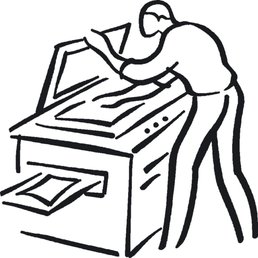Digital Printing vs Offset Printing
 If you’ve ever had to outsource a print job instead of doing it yourself, you’ve undoubtedly heard the terms offset printing and digital printing. How do they differ from one another? Let’s take a look at these two printing methods, their differences, and when you should choose one or the other for your next print project.
If you’ve ever had to outsource a print job instead of doing it yourself, you’ve undoubtedly heard the terms offset printing and digital printing. How do they differ from one another? Let’s take a look at these two printing methods, their differences, and when you should choose one or the other for your next print project.
Offset Printing
Offset printing begins with an aluminum plate onto which the design is applied. The inked image on this printing plate is printed onto a rubber cylinder, which in turn is then transferred (i.e., offset) to paper or other material. The name offset comes from the fact that the ink applied to these other surfaces before actually being applied the paper. Offset printing is the best choice print jobs are large. It provides accurate color reproduction, and crisp, clean professional looking printing.
You can also use a much wider variety of custom papers and specialty inks, such as metallic or fluorescent inks in the offset process.
While offset printing is a fantastic way to produce great-looking print projects, many businesses or individuals do not need large runs of 500 or more, and the best solution is digital printing.
Advantages of offset printing:
• Large quantities can be printed cost effectively
• A large variety of paper types with custom finishes are available
• Special inks such as metallic, Pantone and custom colors are available
• Highest possible printing quality, with greater detail and color fidelity
 Digital Printing
Digital Printing
Digital printing does not utilize other surfaces the way offset printing does. Instead, it uses coloring options such as toner (as in laser printers) or larger liquid ink reservoirs.
Digital printing is an ideal choice when lower print quantities are needed. Another benefit of digital printing is its customizable abilities. Sometimes, when each piece might need a unique name or address, digital can handle it because it is continually being fed information from a computer. Offset printing cannot accommodate this need because once the design is set on the aluminum plate, that is what will print.
Advantages of digital printing:
• Lower setup costs for shorter runs
• Print on demand – the amount you need, when you need it
• Inexpensive black and white digital printing
• Customizable print jobs
Return to the Tech Trends Newsletter

